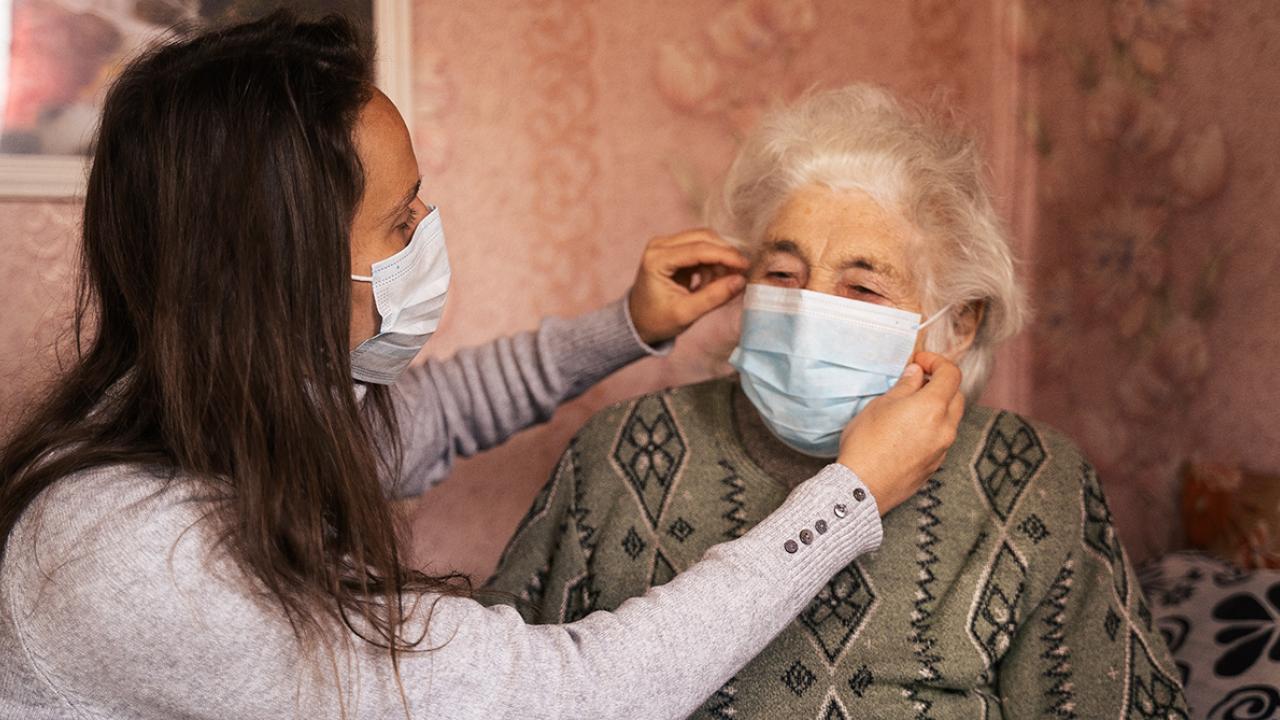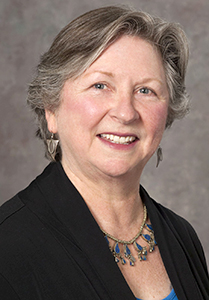
UC Davis Health Expert Offers Family Caregivers Road Map for Navigating COVID-19
This article originally appeared at health.ucdavis.edu.
COVID-19 has stressed everyone in American life, and no one is feeling the strain more than older adults – and the people who care for them.
Older people battle the constant and often heightened fear of being infected by the coronavirus. They face increased difficulties maneuvering through social distancing or isolation in their daily lives and simply of caring for themselves.
Their family caregivers often reflect that stress and face their own confusion or anxiety about how to help their relatives steer through this complicated COVID-19 world and how to find their own healthy paths.
Terri Harvath has been watching the worries and complications that COVID-19 injects into families with older members. She is the director of the Family Caregiving Institute at the Betty Irene Moore School of Nursing, and she has a roadmap for family caregivers to navigate these pandemic times.
“Some family caregivers are torn about how to protect themselves and their relatives,” said Harvath, who is also the senior director for strategic initiatives at the school of nursing.
“It starts with this: Caregivers need to put on their own oxygen masks first. They need to take care of themselves or they won’t be around to help their families.”
That includes protecting themselves from COVID-19 infection and recognizing the social isolation they face along with their aging family members.
Talk it through first
Caring for older adults is like trying to balance on a three-legged stool, Harvath said. Caregivers often struggle managing the tension between protecting the older adult’s safety, quality of life and independence.
“For many older adults, independence is hugely important,” she said. “So talk with them now, in case something happens, and ask, ‘What if?’ Many older adults have very clear ideas about what they would and wouldn’t want.”
It also helps caregivers to understand what is normal for their family member.
“If an older adult has been actively engaged with people, they’re going to need connections, even if they get sick,” Harvath said. “As opposed to someone like me who has a high tolerance for alone time.”
How to recognize if your older family member may have COVID-19
“It’s not unusual for COVID-19 to present differently in older adults,” Harvath said. “One early harbinger would be a change in their mental status. Sometimes even before more “classic” symptoms, you might see them become confused. That could be a sign something is brewing.”
As for the symptoms of COVID-19, the checklist is similar but not identical to younger adults: Look for changes in breathing, dry cough, increased fatigue, loss of smell, muscle pain, sore throat, or diarrhea.
“One big difference is they may not have a high fever,” she said. “Older adults may not mount the fever response of younger people.”
Another hitch: Older adults may already be dealing with health issues that mimic COVID-19, so it can be hard for caregivers to differentiate.
“That’s why it’s so important for family caregivers to think about whether there were opportunities for exposure,” Harvath said. “Did they go shopping? Have people over for a birthday or holiday? Remember, they are far more vulnerable than younger people, so it could have been something small.”
Who to contact first?
“If your older family member is having severe breathing problems, call 911. Time matters,” she said. “Do not be afraid to send them to an emergency department. Most hospitals have put processes in place that reduce the risk for patients seeking care.”
If symptoms are more general and do not appear to be an emergency, call your provider or even your local emergency room and ask for an advice nurse, but don’t wait.
“When in doubt, call,” Harvath said. “With older adults, it never hurts to be cautious.”
Caring for an older COVID-19 patient at home
Many older adults will not need hospitalization, so this is where you definitely put your oxygen mask on first – for you and any other family in the home, she said.

That means:
- Practice the same social distancing you would with anyone else, when possible.
- Wear a mask around them.
- Wash your hands and avoid touching your face after being in their environment.
- If you can, keep your older patient in a separate, well-ventilated room with windows open whenever possible.
- Also open windows in the rest of the house.
- Dedicate dishes and utensils just for them and wash them thoroughly.
“Be mindful of the isolation they will feel,” Harvath said. “That can be especially hard on an older adult. It’s great if you can engage them through technology or games or even window visits.”
Teamwork helps
If you’re an in-home caregiver, if possible, have others who don’t live there run errands like shopping and picking up medications.
“That minimizes any more risk of exposure for everyone,” Harvath said. “And if you can, have other family members or friends call regularly so your older adult won’t feel isolated.”
Keep them hydrated
“Reduce the things that could further tax an older adult’s immune response,” she said. “Hydration and nutrition are keys, but that doesn’t mean forcing fluids on them. If you tell someone, ‘Drink this 36-ounce glass of water,’ they’ll say, ‘No way.’”
Harvath’s suggestions:
- Bring small juice glasses often, so they’re not daunting.
- Same with food – try small frequent helpings of foods they like.
- Don’t go overboard trying to force in nutritional drinks, especially if they don’t taste good to your older family member.
- “I’m a strong believer in Vitamin I – ice cream,” she said. “It has calories, protein, even some fluids, and it tastes great.”
“In the short run, this is about keeping them alive,” Harvath said. “This is not the time to worry about their cholesterol. You want to give them foods that will comfort them.”
Keep them moving
“Movement helps their blood flow and makes them take deeper breaths so they don’t develop secondary pneumonia,” she said. “Any movement helps.” She suggests:
- At the start, simply change their position in bed. Rolling from one side to the other will help them take deep breaths.
- Then sit them on the side of the bed, just dangling their feet. That leads to more breathing.
- Place a table on the side or in front of the bed so they’ll lean forward.
- Next, have them sit in a chair for 10 minutes at first. Increase the time slowly.
- If they’re up for it, take slow walks around the room or house.
“They don’t have to walk around the block,” Harvath said. “Older adults’ progress can be slow, so mark success with baby steps. Tell them, ‘Look, you sat for 10 minutes today, tomorrow we’ll go for 12 to 15 minutes.’ It helps them if they see they’re making progress.”
How to tell if they’re getting worse
Along with increased confusion, any trouble breathing are signs that things have turned worse.
“Look for clues they’re lacking oxygen, like blue lips or face or fingertips,” she said. “They also might be sleepy or hyper alert – older adults can develop a delirium that’s sort of an agitated state where they just can’t settle down. Any of those might be time to call your provider or 911.”
Caregiving for family caregivers
Caregivers can sometimes forget that they matter, too, Harvath said.
“You need to do the things that make you feel centered and well, whether that’s a walk or a Zoom call or whatever else works for you,” she said.
Harvath said to remember that progress for an older family member is not a straight line. “Sometimes they just have a bad day,” Harvath said. “That may not mean they’re going backward, so don’t be hard on yourself.
“They need you to be healthy,” she said. “But you also deserve to be healthy.”
Learn more about UC Davis' Big Idea: Healthy Aging in a Digital World >>
